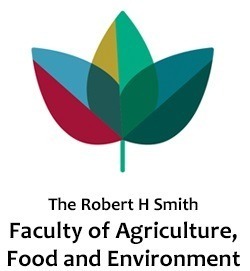Grünzweig, J. ; De Boeck, H. J. ; Rey, A. ; Santos, M. J. ; Adam, O. ; Bahn, M. ; Belnap, J. ; Deckmyn, G. ; Dekker, S. C. ; Flores, O. ; et al. Dryland Mechanisms Could Widely Control Ecosystem Functioning In A Drier And Warmer World.
2022.
Publisher's VersionAbstractResponses of terrestrial ecosystems to climate change have been explored in many regions worldwide. While continued drying and warming may alter process rates and deteriorate the state and performance of ecosystems, it could also lead to more fundamental changes in the mechanisms governing ecosystem functioning. Here we argue that climate change will induce unprecedented shifts in these mechanisms in historically wetter climatic zones, towards mechanisms currently prevalent in dry regions, which we refer to as ‘dryland mechanisms’. We discuss 12 dryland mechanisms affecting multiple processes of ecosystem functioning, including vegetation development, water flow, energy budget, carbon and nutrient cycling, plant production and organic matter decomposition. We then examine mostly rare examples of the operation of these mechanisms in non-dryland regions where they have been considered irrelevant at present. Current and future climate trends could force microclimatic conditions across thresholds and lead to the emergence of dryland mechanisms and their increasing control over ecosystem functioning in many biomes on Earth.
Lu, M. ; Bond, W. J. ; Sheffer, E. ; Cramer, M. D. ; West, A. G. ; Allsopp, N. ; February, E. C. ; Chimphango, S. ; Ma, Z. ; Slingsby, J. A. ; et al. Biome Boundary Maintained By Intense Belowground Resource Competition In World'S Thinnest-Rooted Plant Community.
Proceedings of the National Academy of Sciences 2022,
119, e2117514119.
Publisher's VersionAbstractThe distribution and stability of biomes are critical for understanding, modeling, and managing the land biosphere. While studies have emphasized abiotic factors such as climate, geology, or fire regimes, we here identify a biological mechanism—plant–plant competition for belowground resources—as critical for maintaining the boundary between the Fynbos and Afrotemperate Forest biomes in South Africa. We demonstrate an apparent general mechanism in which local competition triggers a biome-scale feedback between plant traits and soil resources, which, in turn, stabilizes the biome boundary by allowing plants to maintain their own preferred soil conditions. Our findings are of general importance for understanding the organization of biodiversity across landscapes, for managing alien plant invasions, and for modeling the future of biome boundaries. Recent findings point to plant root traits as potentially important for shaping the boundaries of biomes and for maintaining the plant communities within. We examined two hypotheses: 1) Thin-rooted plant strategies might be favored in biomes with low soil resources; and 2) these strategies may act, along with fire, to maintain the sharp boundary between the Fynbos and Afrotemperate Forest biomes in South Africa. These biomes differ in biodiversity, plant traits, and physiognomy, yet exist as alternative stable states on the same geological substrate and in the same climate conditions. We conducted a 4-y field experiment to examine the ability of Forest species to invade the Fynbos as a function of growth-limiting nutrients and belowground plant–plant competition. Our results support both hypotheses: First, we found marked biome differences in root traits, with Fynbos species exhibiting the thinnest roots reported from any biome worldwide. Second, our field manipulation demonstrated that intense belowground competition inhibits the ability of Forest species to invade Fynbos. Nitrogen was unexpectedly the resource that determined competitive outcome, despite the long-standing expectation that Fynbos is severely phosphorus constrained. These findings identify a trait-by-resource feedback mechanism, in which most species possess adaptive traits that modify soil resources in favor of their own survival while deterring invading species. Our findings challenge the long-held notion that biome boundaries depend primarily on external abiotic constraints and, instead, identify an internal biotic mechanism—a selective feedback among traits, plant–plant competition, and ecosystem conditions—that, along with contrasting fire regime, can act to maintain biome boundaries.

